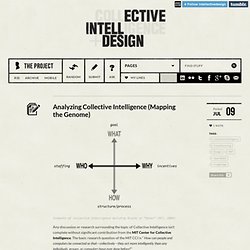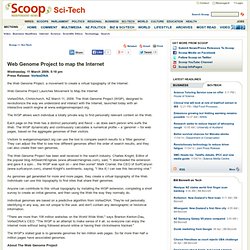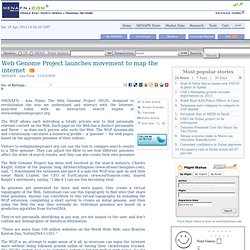

SkyWeaver. Youniverse.com - Be Understood. VisualDNA™ 8 Steps...(T.G) Making ads more interesting. At Google, we believe that ads are a valuable source of information — one that can connect people to the advertisers offering products, services and ideas that interest them.

By making ads more relevant, and improving the connection between advertisers and our users, we can create more value for everyone. Users get more useful ads, and these more relevant ads generate higher returns for advertisers and publishers. Advertising is the lifeblood of the digital economy: it helps support the content and services we all enjoy for free online today, including much of our news, search, email, video and social networks. That's why Google has worked hard to create technology that makes the advertising on our own sites, and those of our partners, as relevant as possible. To date, we have shown ads based mainly on what your interests are at a specific moment. We think we can make online advertising even more relevant and useful by using additional information about the websites people visit. VortexDNA. Available monthly or annually, VortexDNA Space Weather Data provides a new source of data for your predictive models.
SOHO Satellite The electrical environment of the Earth, generally known as 'space weather', is a major influence on the economy. Harnessing Crowds: Mapping the Genome of Collective Intelligence by Thomas Malone, Robert Laubacher, Chrysanthos Dellarocas. Thomas W.

Malone Massachusetts Institute of Technology (MIT) - Sloan School of Management Robert Laubacher Massachusetts Institute of Technology (MIT) - Center for Coordination Science (CCS) Chrysanthos Dellarocas Boston University - Department of Management Information SystemsFebruary 3, 2009 MIT Sloan Research Paper No. 4732-09. Analyzing Collective Intelligence (Mapping the Genome) Any discussion or research surrounding the topic of Collective Intelligence isn’t complete without significant contribution from the MIT Center for Collective Intelligence.

The basic research question of the MIT CCI is “ How can people and computers be connected so that—collectively—they act more intelligently than any individuals, groups, or computers have ever done before?” As promised, I’ll touch on an influential paper published by the Center in 2009, and written by Thomas W. Malone, Robert Laubacher, and Chrysanthos Dellarocas entitled: “Harnessing Crowds: Mapping the Genome of Collective Intelligence”. In order to preserve hope for people actually taking the time to read this I’ve kept this brief and will elaborate in greater detail in future posts… Let’s get to it.
Part 1 This paper recognizes the fact that to actually employ Collective Intelligence, it is vital to have a deeper understanding of how the systems work, and provides a framework to help provide that understanding. The Web Genome Project. Web Genome Project to map the Internet. The Web Genome Project, a movement to create a virtual topography of the Internet.

Web Genome Project Launches Movement to Map the Internet VortexDNA, Christchurch, NZ March 11, 2009. Blog.webgenomeproject.org » Personalized search. Hamlet Batista put up an excellent piece on SEOMoz a few days ago, entitled 7 Reasons Why Search Engines Don’t Return Relevant Results 100% of the Time . In it, he describes, funnily enough, the seven reasons why search engines don’t return relevant results: Relevance is subjective Natural language searches Poor queries Synonymy Polysemy Imperfect performance. C.F.O.I.R. Web Genome Project launches movement to map the internet. (MENAFN - Asia Pulse) The Web Genome Project (WGP), designed to revolutionize the way we understand and interact with the Internet, launched today with an interactive search engine at www.webgenomeproject.org.

The WGP allows each individual a totally private way to find personally relevant content on the Web. Each page on the Web has a distinct personality and flavor -- as does each person who surfs the Web. The WGP dynamically and continuously calculates a numerical profile -- a 'genome' -- for web pages, based on the aggregate genomes of their visitors.
Visitors to webgenomeproject.org can use the tool to compare search results to a 'filter genome'. They can adjust the filter to see how different genomes affect the order of search results, and they can also create their own genomes. Blog.webgenomeproject.org. Blog.webgenomeproject.org » Complex systems. There’s a new Thai restaurant down the corner from my office. It’s truly lovely — beautiful handmade tables and fabulous oversized wicker chairs like giant thrones. It’s got yummy food. And it’s got personality. The first time I went there they weren’t fully up and running yet, and their furnishings were still en route from Thailand. The owner — who is just about the most earnest person I’ve ever met — used his iPhone to show me pictures of everything in the container. I want them to succeed, I truly do.
This particular restaurant is three doors down (literally) from another Thai restaurant I’ve been frequenting, which also has great food and great service. Blog.webgenomeproject.org » Blog Archive » The Internet’s Hierarchy of Needs. Summary: In this post, I look at parallels between Maslow’s Hierarchy of Needs and the Internet, which could be said to have its own hierarchy of needs.